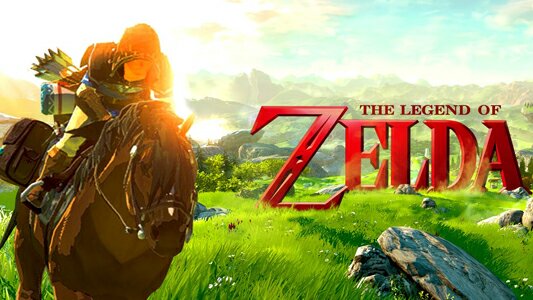Nintendo Releases New Zelda Game


Back in 1986, the original “Legend of Zelda” plopped Link down on a screen without a weapon to his name and with an entire world to explore. This freedom to explore a massive overworld from the outset made the game revolutionary. Areas, dungeons and secrets could be completed in (mostly) any order, giving the player full reign over his or her sense of adventure.
Sadly, this freedom has been restricted as the series has gone on. As the Zelda franchise began to focus more and more on a linear narrative, the design of the overworlds began to follow suit, with zones unlocked in a very specific manner to fit the needs of the story. There were always secrets and exploration to be had, but it was always within the context of the game’s structure instead of the player’s desire to explore.
This came to a head in 2011’s “Skyward Sword,” arguably the most linear game in the series with only three main areas to explore under the clouds. There was naturally a backlash as fans claimed it went against the spirit of the series, and Nintendo has finally responded with the open-world masterpiece “The Legend of Zelda: Breath of the Wild.”
Within seconds of starting up the game, Link walks out onto a plateau with the vista of Hyrule before him, and from there the world is the player’s to explore. After the initial tutorial (which is still built around the player’s own exploration and experimentation), Link can travel anywhere in sight. The game gives the player a sense that their adventure is really their own, as everything is driven by a natural desire to explore rather than be locked into an overarching narrative device.
Perhaps the most astounding aspect of the game’s structure is how the exploration still feeds directly into the main goal. Link has to go to Hyrule Castle and defeat Calamity Ganon before he can bring the kingdom to further ruin. The player is free to attempt this at any point, but the game makes it clear that the character will not be strong enough. This theme of increasing the player’s strength is directly tied to exploration. Finding shrines — which also act as warp points — is tied to increasing Link’s health, finding certain secrets increase his armor and defense and raiding enemy camps can yield better weapons.
Unlike other RPGs where players can stay in one place and “grind” to improve their stats, “Breath of the Wild” requires exploration to get stronger, a further incentive not to treat the game as merely going to the five or so places the narrative requires. This would mean nothing if the world itself wasn’t compelling, but Nintendo has created one of the best overworlds in the series. Go off to any place, and the player will find four or five other things along the way to do.
Characters, towns, shrines and secrets are so densely packed into the world that it’s impossible to play for more than five minutes without stumbling across something new to do. Many of the memorable moments simply come from investigating suspicious-looking places on the fringes of the map, and the journey there is always riddled with things to do.
There are more systems in the game to discuss — the cooking system for temporary buffs, the limited inventory that forces the player to constantly swap out weapons and a dynamic weather system with tangible effects on gameplay are only the tip of the iceberg. When all of these systems come together, however, “Breath of the Wild” transcends set rules in favor of true adventure for the player. If pulling a Master Sword out of a pedestal has ever meant anything to fans, they’ll want to try this game.










